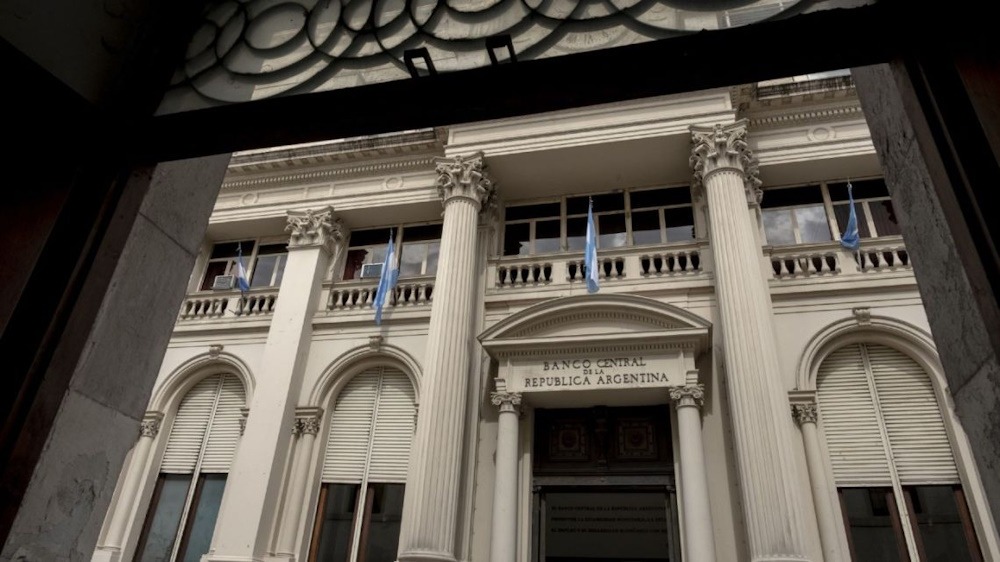Argentina’s peso exhibited a notable appreciation on Thursday following the announcement by authorities regarding an increase in reserve requirements for banks. This move is aimed at bolstering the currency in the wake of a significant local debt auction that did not meet market expectations. The central bank has raised reserve requirements by five percentage points to a total of 50 percent, encompassing both cash and remunerated notes. A Central Bank statement indicates that they will now be assessed on a daily basis, replacing the prior monthly average measurement. The Treasury has scheduled an extra debt auction for Monday as well. The actions are designed to absorb liquidity following President Javier Milei’s administration rolling over only 61 percent of maturities in a Treasury debt auction on Wednesday, which poses a risk of injecting six trillion pesos into the economy, potentially exerting pressure on the exchange rate.
The peso continued its upward trajectory on Thursday following the announcement, appreciating by as much as 1.7 percent to reach a value of 1,291 pesos per dollar. The parallel rate exhibited increased strength. The currency’s response was expected by market participants following the indication from Central Bank board member Federico Furiase on Wednesday night that the decision to elevate reserve requirements would involve an augmentation of interest-bearing assets. Nonetheless, an ETF that monitors Argentine equities experienced a decline of 2.6 percent, positioning itself for its most significant daily drop since June. In the context of emerging markets, Argentina’s dollar bonds are currently experiencing significant declines, as evidenced by the notes maturing in 2035, which have decreased by 0.4 cent on the dollar, now trading at nearly 67 cents, based on indicative pricing data.
While the interest rate on the new reserves remains to be established, this action signifies an acknowledgment that the existing mechanisms are not functioning effectively. In a report, Federico Filippini, the chief economist of Adcap Grupo Financero, and Javier Casabal, the head of strategy, articulated their insights. The rise in reserve requirements “represents an unavoidable short-term cost to preserve FX stability and keep disinflation on track ahead of the election,” noted Ramiro Blazquez, a strategist at StoneX. “This reinforces the perspective that, in the lead-up to the midterms, the government is placing greater emphasis on disinflation rather than economic activity.”
Authorities rolled over 9.1 trillion pesos of the 15 trillion pesos in short-term papers maturing Wednesday. The total maturities accounted for approximately one-third of the total money supply in the economy. Despite authorities presenting annualized yields reaching a historic 69.2 percent, many investors opted to avoid the auction. “Something clearly went wrong,” stated Juan Manuel Pazos, chief economist at local broker One618. “They injected six trillion pesos at rates of up to 70 percent.” It appears to be quite clear in its implications. The unsuccessful auction serves as an indicator of a liquidity squeeze within the local financial system, following the Central Bank’s decision to increase reserve requirements as a strategy to manage inflation and alleviate pressure on the currency. The monthly consumer price index experienced a notable increase of 1.9 percent in July, in contrast to June’s 1.6 percent, aligning with projections.
Experts had cautioned that a debt rollover rate falling below 90 percent could exert pressure on the exchange rate, as it would necessitate the government to introduce additional liquidity into the economy to settle the segment of the notes that could not be refinanced. Such developments may induce inflationary pressures and could adversely affect Milei’s approval ratings in the lead-up to the crucial elections in Buenos Aires next month, as well as the mid-term elections in October. In July, Argentina’s currency experienced a decline exceeding 13 percent, marking its most significant depreciation since Milei implemented the peso devaluation at the commencement of his administration in 2023. The increasing demand for dollars in anticipation of local elections has aligned with a seasonal downturn in agricultural export volumes, which serve as a primary source of foreign currency in South America’s second-largest economy.

